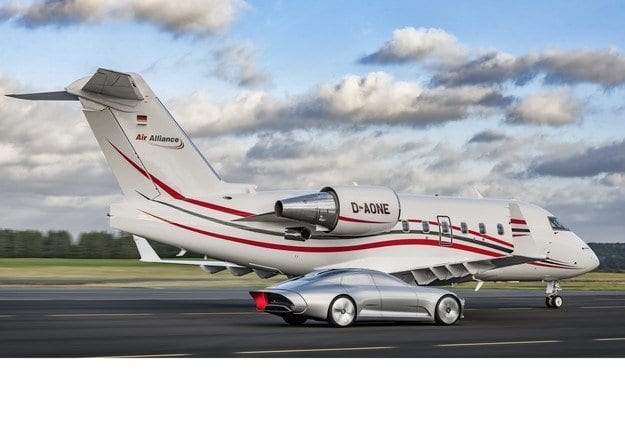
Aerodynamics Handbook

The most important factors affecting the air resistance of the vehicle
Low air resistance helps reduce fuel consumption. However, in this regard, there is huge room for development. If, of course, aerodynamics experts agree with the opinion of the designers.
"Aerodynamics for Those Who Can't Make Motorcycles." These words were spoken by Enzo Ferrari in the sixties and clearly demonstrate the attitude of many designers of the time towards this technological side of the car. However, it was only ten years later that the first oil crisis occurred, which radically changed their entire value system. Times when all the forces of resistance during the movement of the car, and especially those that arise when it passes through the air layers, are overcome by extensive technical solutions, such as increasing the displacement and power of engines, regardless of the amount of fuel consumed, they go away, and engineers begin to look more effective ways to achieve your goals.
At the moment, the technological factor of aerodynamics is covered with a thick layer of oblivion dust, but for designers this is not news. The history of technology shows that even in the 77s, advanced and inventive minds, such as the German Edmund Rumpler and the Hungarian Paul Zharai (who created the iconic Tatra TXNUMX), formed streamlined surfaces and laid the foundation for an aerodynamic approach to car body design. They were followed by a second wave of aerodynamic specialists such as Baron Reinhard von Könich-Faxenfeld and Wunibald Kam, who developed their ideas in the XNUMXs.
It is clear to everyone that with increasing speed comes a limit, above which air resistance becomes a critical factor for driving a car. Creating aerodynamically optimized shapes can push this limit up considerably and is expressed by the so-called flow factor Cx, since a value of 1,05 has a cube inverted perpendicular to the airflow (if it is rotated 45 degrees along its axis, so that the upstream edge decreases to 0,80). However, this coefficient is only one part of the air resistance equation - you must add the size of the frontal area of the car (A) as an important element. The first of the tasks of aerodynamicists is to create clean, aerodynamically efficient surfaces (factors of which, as we will see, a lot in a car), which ultimately leads to a lower flow coefficient. Measuring the latter requires a wind tunnel, which is an expensive and extremely complex structure – an example of this is the tunnel commissioned in 2009. BMW, which cost the company 170 million euros. The most important component in it is not a giant fan, which consumes so much electricity that it needs a separate transformer substation, but an accurate roller stand that measures all the forces and moments that a jet of air exerts on a car. His task is to evaluate the entire interaction of the car with the air flow and help specialists to study every detail and change it so that it is not only effective in the air flow, but also in accordance with the wishes of the designers. . Basically, the main drag components a car encounters come from when the air in front of it compresses and shifts, and – very importantly – from the intense turbulence behind it at the rear. There is a low pressure zone that tends to pull the car, which in turn is mixed with a strong vortex effect, which aerodynamicists also call "dead excitation". For logical reasons, after the station wagon models, the vacuum level is higher, as a result of which the consumption coefficient deteriorates.
Aerodynamic drag factors
The latter depends not only on factors such as the overall shape of the car, but also on specific parts and surfaces. In practice, the overall shape and proportions of modern cars account for 40 percent of total air resistance, a quarter of which is determined by object surface structure and features such as mirrors, lights, license plate, and antenna. 10% of air resistance is due to flow through the vents to the brakes, engine and transmission. 20% is the result of vortex in various floor and suspension designs, that is, everything that happens under the car. And what is most interesting - 30% of air resistance is due to the vortices created around the wheels and wings. A practical demonstration of this phenomenon clearly shows this - the flow rate from 0,28 per vehicle drops to 0,18 when the wheels are removed and the fender vents are closed. It's no coincidence that all surprisingly low-mileage cars - such as the first Insight of Honda and the GM EV1 electric car - have hidden rear fenders. The overall aerodynamic shape and the closed front end, due to the fact that the electric motor does not require a lot of cooling air, allowed GM designers to develop the EV1 model with a flow factor of just 0,195. Tesla Model 3 has Cx 0,21. To reduce the vorticity of the wheels in vehicles with internal combustion engines, the so-called. "Air curtains" in the form of a thin vertical air flow directed from the opening in the front bumper, blowing around the wheels and stabilizing the vortices, the flow to the engine is limited by aerodynamic shutters, and the bottom is completely closed.
The lower the values of the forces measured by the roller stand, the smaller Cx. It is typically measured at a speed of 140 km/h – a value of 0,30, for example, means that 30 percent of the air a car passes through is accelerated to its speed. As for the front, its reading requires a much simpler procedure - for this, the external contours of the car are outlined with a laser when viewed from the front and the enclosed area in square meters is calculated. It is then multiplied by the flow factor to get the total air resistance of the car in square meters.
Returning to the historical outline of our aerodynamic narrative, we find that the creation of the standardized fuel consumption measurement cycle (NEFZ) in 1996 actually played a negative role in the aerodynamic evolution of cars (which advanced significantly in the 7s). ) because the aerodynamic factor has little effect due to the short period of high-speed movement. Despite the decrease in the consumption coefficient over the years, the increase in the dimensions of vehicles of each class leads to an increase in the frontal area and, consequently, to an increase in air resistance. Cars such as the VW Golf, Opel The Astra and the BMW 90 Series had higher air resistance than their predecessors in the 90s. This trend is facilitated by impressive SUV models with their large front area and deteriorating streamlining. This type of vehicle has been criticized mainly for its high weight, but in practice this factor becomes less of a relative importance with increasing speed - when driving outside the city at a speed of about 50 km / h, the proportion of air resistance is about 80 percent, at highway speeds it increases to XNUMX percent from the total resistance faced by the car.
Aerodynamic tube
Another example of the role of air resistance in vehicle performance is a typical Smart City model. A two-seater may be nimble and nimble on city streets, but its short and proportional bodywork is highly inefficient from an aerodynamic standpoint. Against the backdrop of low weight, air resistance becomes an increasingly important element, and with Smart it starts to have a strong effect at speeds of 50 km / h. It is not surprising that despite the lightweight design, it did not live up to expectations of a relatively low cost.
However, despite Smart's shortcomings, parent company Mercedes' attitude to aerodynamics is an example of a methodical, consistent and proactive approach to the process of creating spectacular shapes. It can be argued that the results of investment in wind tunnels and hard work in this area are especially noticeable in this company. A particularly striking example of the effect of this process is the fact that the current S-Class (Cx 0,24) has less air resistance than the Golf VII (0,28). In the search for more interior space, the shape of the compact model has acquired a rather large frontal area, and the flow coefficient is worse than that of the S-class due to its shorter length, which does not allow for streamlined surfaces and much more. - already due to a sharp transition from behind, contributing to the formation of vortices. However, VW is adamant that the next generation Golf will have significantly less air resistance and be lowered and streamlined. The lowest recorded fuel consumption factor of 0,22 per ICE vehicle is the Mercedes CLA 180 BlueEfficiency.
The advantage of electric vehicles
Another example of the importance of aerodynamic shape against the background of weight are modern hybrid models and even more so electric vehicles. In the case of the Prius, for example, the need for a highly aerodynamic design is also dictated by the fact that as speed increases, the efficiency of the hybrid powertrain decreases dramatically. In the case of electric vehicles, everything related to the increase in mileage in electric mode is extremely important. According to experts, reducing the weight by 100 kg will increase the car's mileage by just a few kilometers, but on the other hand, aerodynamics is of paramount importance for an electric car.
Firstly, because the high mass of these vehicles allows them to recover some of the energy used for recuperation, and secondly, because the high torque of the electric motor allows you to compensate for the effect of weight at start-up, and its efficiency decreases at high speeds and high speeds. In addition, the power electronics and the electric motor need less cooling air, which allows for a smaller opening in the front of the car, which, as we have already noted, is the main reason for the deterioration of the flow around the body. Another element of the motivation of designers to create more aerodynamically efficient shapes in today's plug-in hybrid models is the mode of movement without acceleration only with the help of an electric motor, or the so-called. sailing. Unlike sailing boats, where the term comes from and where the wind is supposed to move the boat, electric cars will increase mileage if the car has less air resistance. Creating an aerodynamically optimized shape is the most economical way to reduce fuel consumption.
Text: Georgy Kolev
The flow rates of some famous cars:
Mercedes Simplex
1904 production, Cx = 1,05
Rumpler Tropfenwagen
1921 production, Cx = 0,28
Ford Model T
1927 production, Cx = 0,70
Experimental model Kam
1938 production, Cx = 0,36
Mercedes record car
1938 production, Cx = 0,12
VW Bus
1950 production, Cx = 0,44
VW "turtle"
1951 production, Cx = 0,40
Panhard Dina
1954 production, Cx = 0,26
Porsche 356
1957 production, Cx = 0,36
MG EX 181
1957 production, Cx = 0,15
Citroen DS 19
1963 production, Cx = 0,33
NSU Sport Prince
1966 production, Cx = 0,38
Mercedes C 111
1970 production, Cx = 0,29
Volvo 245 Van
1975 production, Cx = 0,47
Audi 100
1983 production, Cx = 0,31
Mercedes W 124
1985 production, Cx = 0,29
Toyota Prius 1
1997 production, Cx = 0,29
